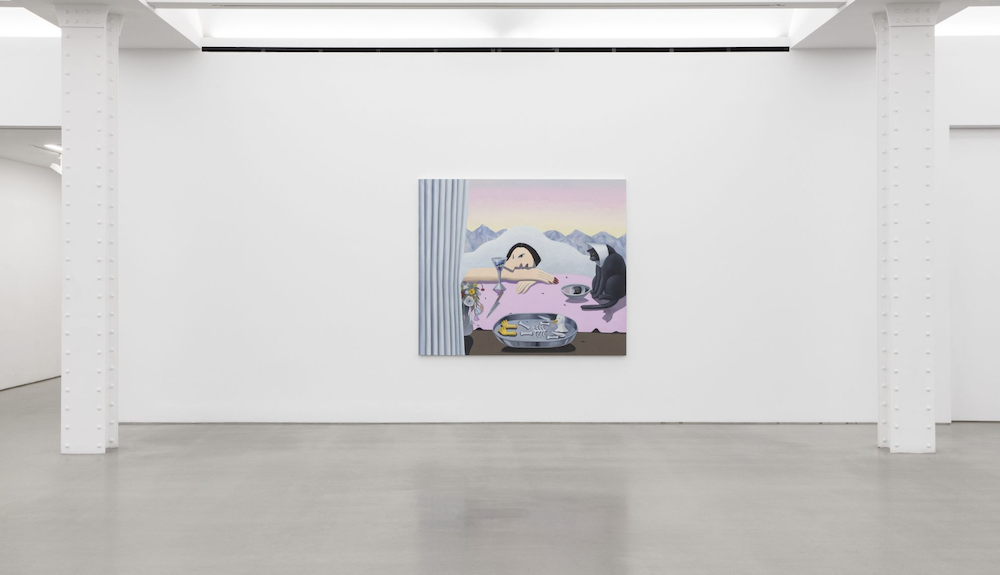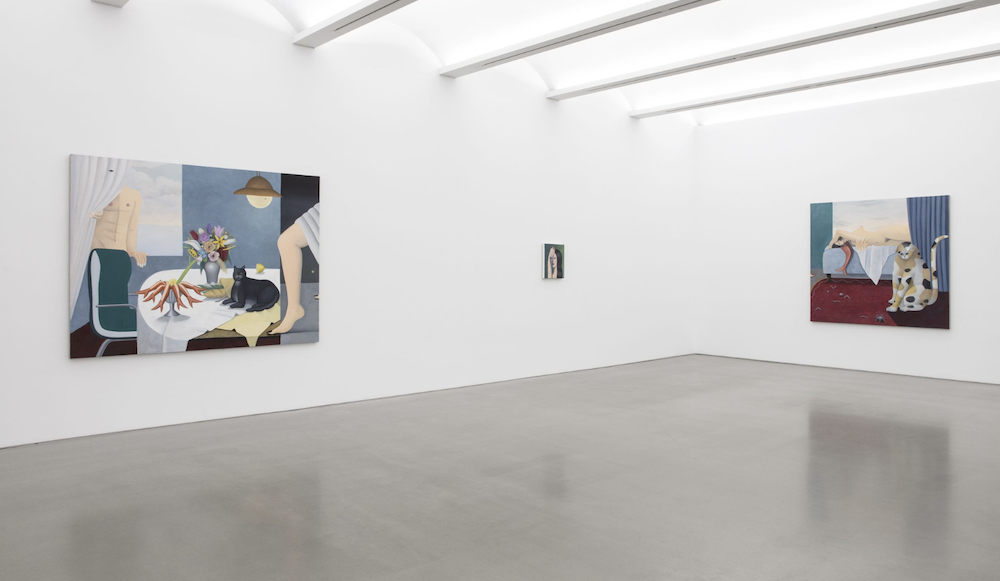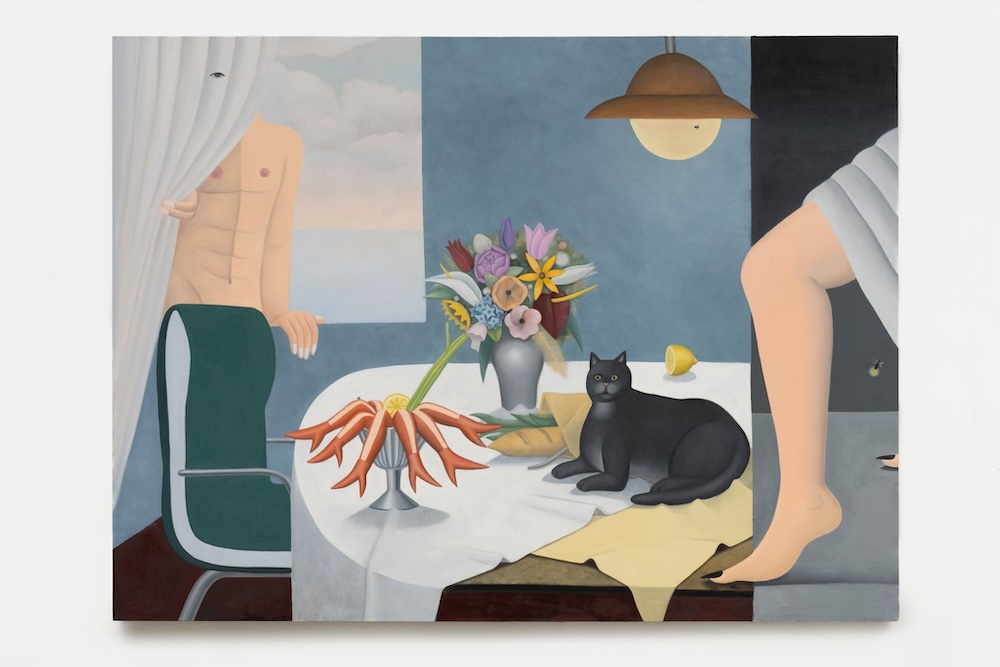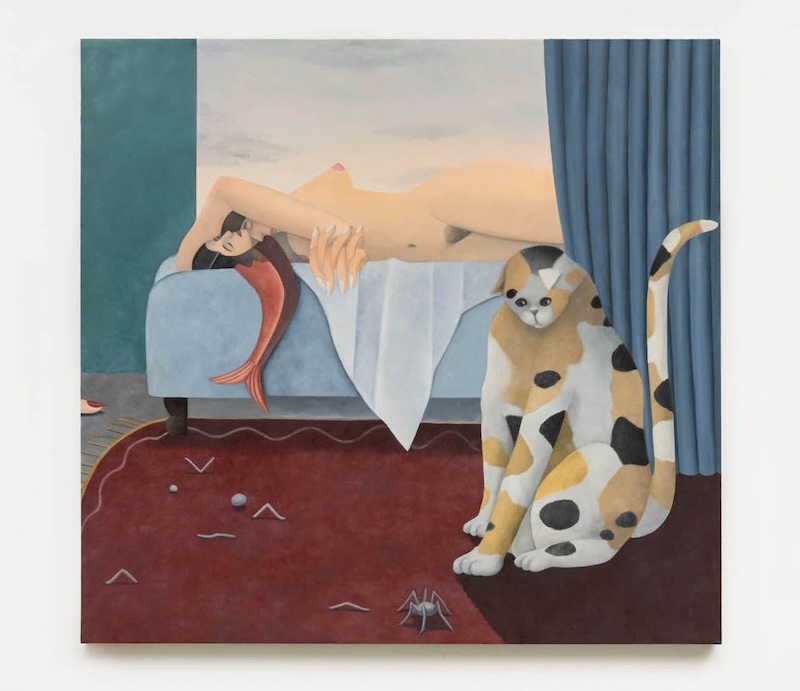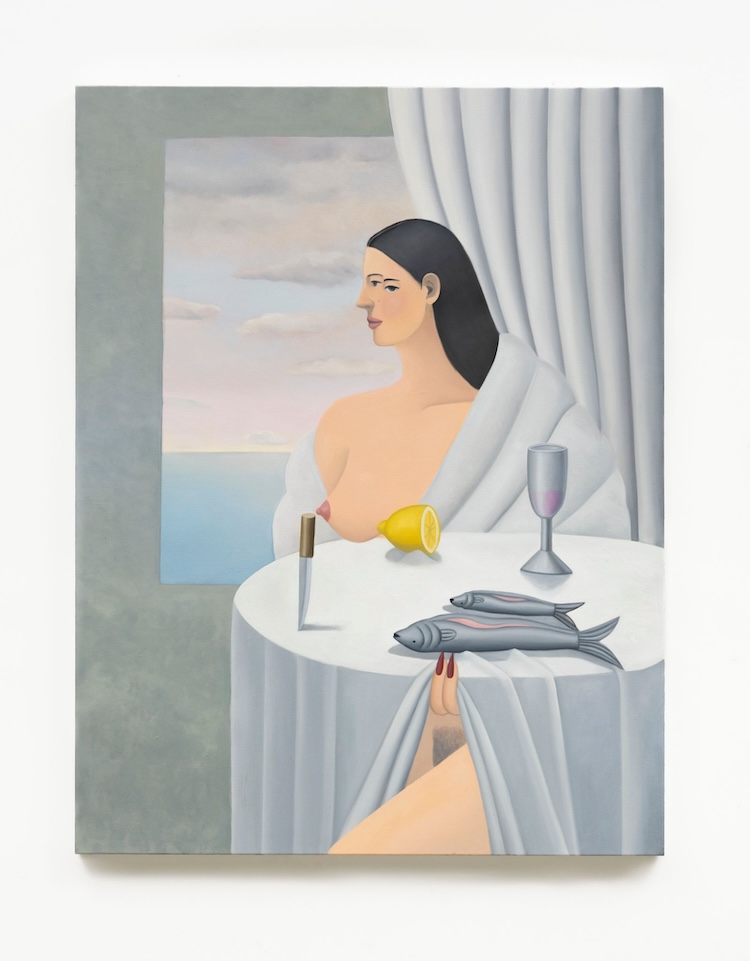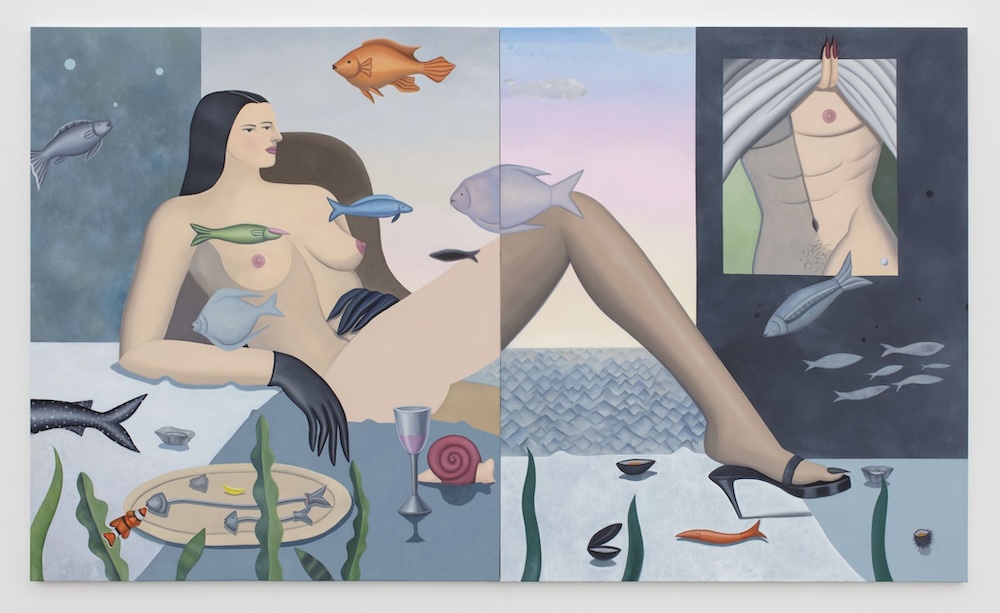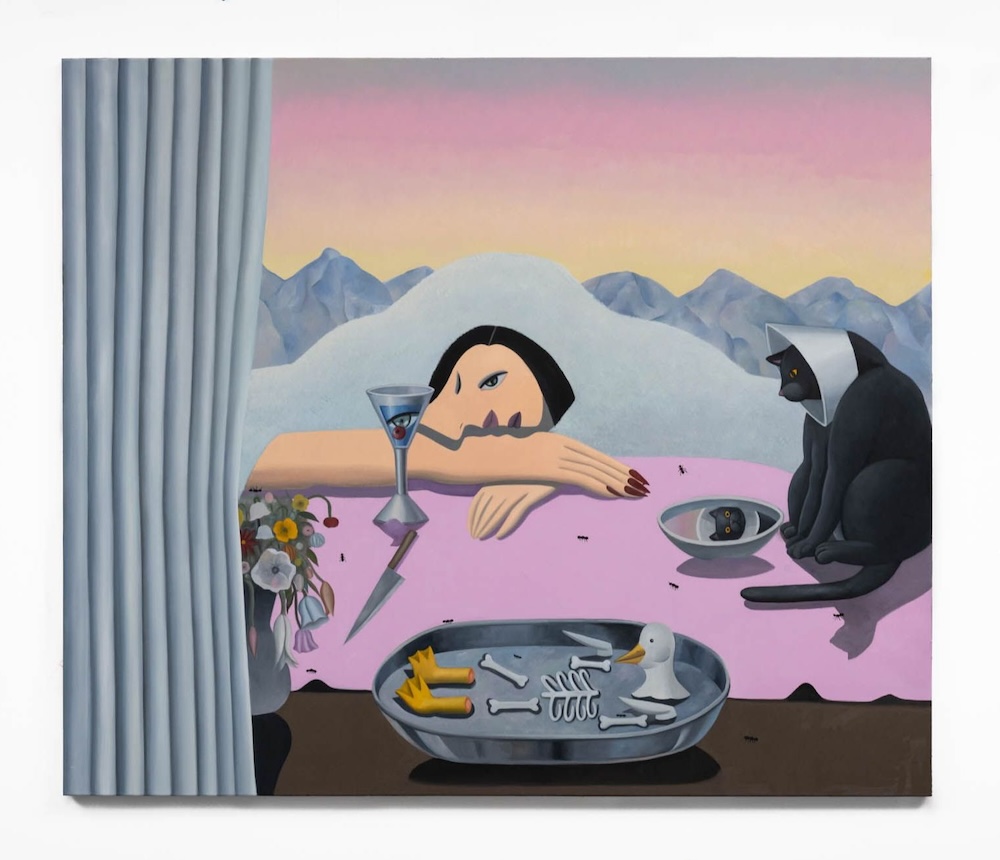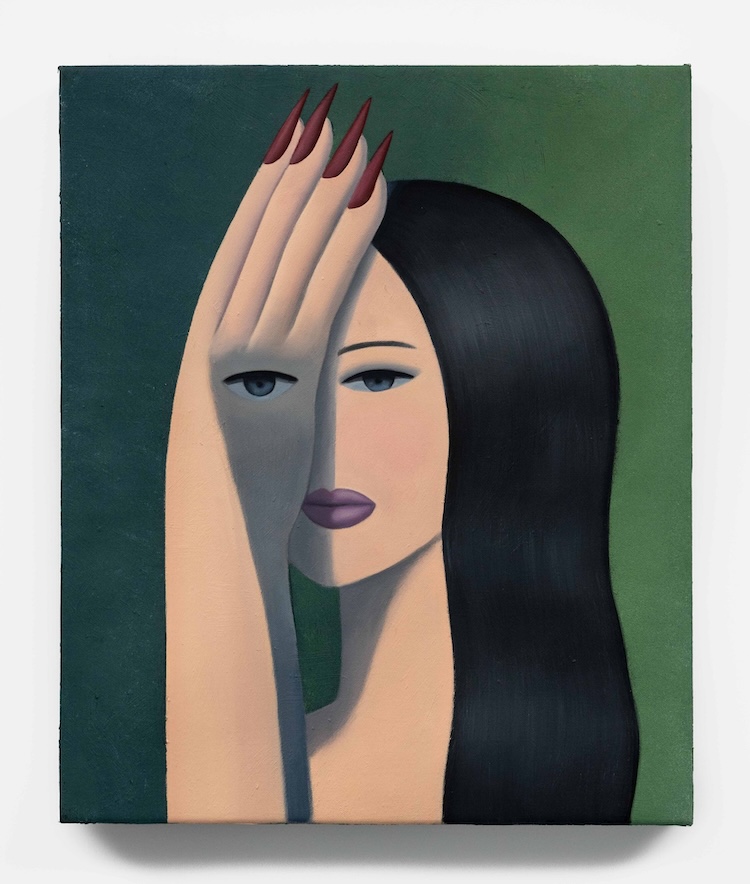Perrotin is pleased to present Fun and Games, an exhibition of new paintings by Montreal-based GaHee Park. On view through April 6th, the exhibition consists of nine artworks that showcase her hyper-stylized romantic scenes, where art history's favorite still life subjects appear to have soured.
In GaHee Park’s fantastical, sensual, occasionally sinister paintings, time and place are indeterminate. The world she conjures could be a glimpse of a deep past, a reflection of the present or a portal into the unconscious. Her monumental figures and cool palette – peachy flesh, lemon yellows, limpid sea-blues and shimmering greys – suggest Mediterranean islands and Classical civilizations filtered through what could be described as a Surrealist take on Pop. Dreamy, naked, smooth-skinned women inhabit rooms in which windows – or paintings-within-paintings? – and extroverted still lives throb with an otherworldly energy. Humans happily cohabit with animals, including a giant cat, a muscular ant, a spider the size of a fist. Now and then, the woman’s solitude is interrupted by a nude man – toned, young, handsome, moustachioed – whose limbs commingle with hers to such a degree that, at times, they become one.
Park’s characters appear at home in their fragmented bodies. In Under Cover (2023), a woman sits at a table, set with a lemon, two fish and a knife; her nipple almost touches its handle. Two eyes look out from the side of her face. (Often, Park’s women have multiple eyes, which intermittently attach themselves to alcoholic beverages, such as in Betrayal (Sweet Blood) (2020), Tipsy Lovers (2021) or Domaine de Fatigue (2022).) With a couple of talon-like fingers – their nails siren red – the protagonist lifts the tablecloth to allow us a peek of her pudenda and a slim thigh. The perspective, however, is skewed: as in 17th century Mannerist art, her lower body could not logically connect to her torso. At times, in works such as Feast Night (2018), Shrimps and Cocktails (2019) and Cat with a View (2022), the female protagonist is observed by a recurring feline form, an external presence which suggests a shift in perception from human to animal.
In Fun and Games (2023) a single, sleeping, female – a pert breast rising like a small mountain on the horizon – has two heads, one of which rests on a large, ochre-red fish. At the centre of the image, two hands, with long identical fingers, clutch each other; another red fingernail is visible to the left. Like a sentry guarding the woman, a large, mottled, cat-like creature in the foreground calmly observes two spiders, one intact, the other with its legs torn off and scattered around its body. A curtain to the right suggests something hidden; it also nods to the elaborate drapery so familiar to Renaissance paintings. Park cites the 14th century Italian artist Giotto as an influence, along with painters such as Philip Guston, the surrealists Gertrude Abercrombie and Max Ernst and, more recently, Nicole Eisenman – all artists whose work, from myriad angles, commingles a robust figuration inflected by a sense of artifice, instability or strangeness.
Brought up in a strict Catholic family, Park has long employed painting as a form of exorcism: of guilt, of female desire, of transgression. The artist grew up hiding her inner life; each day involved decisions about what to reveal or conceal. Secretiveness became a necessary self- protection and drawing a way of expressing her sense of familial alienation. Perhaps this is why the women Park paints are never victims: their bodies are powerful, their expressions inscrutable – their thoughts are their own.
It’s important to Park that her paintings operate from a position of ambiguity. She describes her approach as one that combines a search for beauty with a need to probe ‘the things we don’t talk about’. As such, she’s fascinated by the potential of still life – one of the most coded of genres – to express something more complex than the sum of its parts. In World of Tails (2023) a bunch of lush lilac, yellow, burgundy blooms in a grey vase are placed on a table alongside a loaf of bread, an impassive black cat, a lemon and an arrangement of prawn tails as exuberant as the legs of chorus girls doing the high kick. To the left, a faceless, bare-chested man enters via a window, pushing the curtain back. To the right, a woman’s enters, but only her leg is visible; it touches the table lightly, as if testing the ground. Perspectives shift; instability and a sense of suspension is the order of the day. The characters move towards each other in a space defined via flat planes of near abstracted blues and patterns formed of hard edges and curves. Their journey, however, is, like the flowers, forever stilled; their meeting will never happen. This is, after all, a painting. The artist makes clear: how we choose to define reality is up for grabs.



